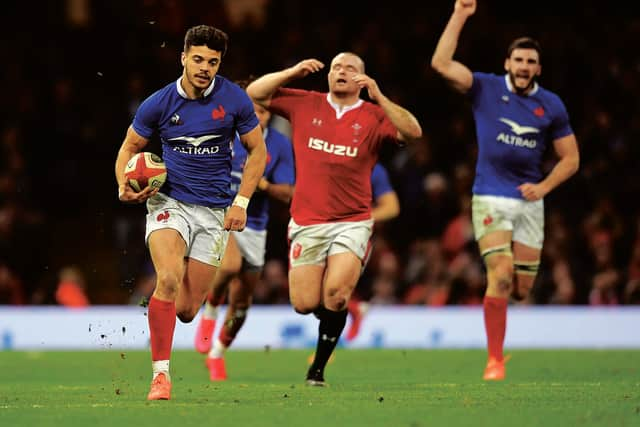Iain Morrison: Shaun Edwards has transformed France, liberating the likes of Romain Ntamack


It is surely apocryphal but, when one player asked what to do if he’d broken a leg, a scowling Edwards reportedly replied: “Hop back into the line.”
With respect to the gaffer Fabian Galthie, France look like an Edwards side and they play like one; they have backbone. When Romain Ntamack made that 14-point interception in Cardiff he did so because he was pressing hard, challenging Wales to find a way past him rather than playing the percentages and conceding space for Wales to utilise.
Advertisement
Hide AdAdvertisement
Hide AdThe whole game is turning Edwards’ way, or perhaps he is bending it to his iron will. After an era of “big scores” we are witnessing the re-emergence of defence as an offensive weapon, which was highly noticeable at the World Cup.
England’s defence neutered New Zealand’s all-singing, all-dancing attack that was reduced to one poacher’s try from an English error. In turn England’s twin midfield playmakers got no change from Siya Kolisi’s South Africa side in that bruising final.
And the try count is falling. Last year the Six Nations averaged 5.6 tries per match. Ahead of this weekend, the 2020 tournament was averaging 4.3; a sharp fall of 20 per cent even if the actual figure is still a long way above 2014’s average of 1.9 tries per match.
Just as we have to tighten our belts in an era of low interest rates, so too the Scots have to tweak their tactics for an era of low(er) try counts and, forewarned is forearmed, Gregor Townsend can’t complain that he doesn’t know what is coming from Edwards’ French team this afternoon.
Les Bleus will be highly aggressive in defence and they may choose to utilise the “umbrella” defence, with the 13 channel leading the line, to prevent the ball getting to the wider channels where threats like Stuart Hogg and Sean Maitland lurk.


Scotland have already made one vital adjustment to a lower scoring game: their defence has been a lot tighter than it was under Matt Taylor, whose reputation never seemed to suffer regardless of how many tries the Scots leaked.
The Scots have restricted good teams (England and Ireland) to one try apiece in poor conditions, and restricted a bad team (Italy) to nil points in good conditions. The test for this squad is holding a good team at bay in good conditions – and the forecast is for decent weather this afternoon.
Even with an improved defence, you fancy the Scots are still going to have to score tries to win this match, and that has not proven easy against Edwards’ organised defence.
Advertisement
Hide AdAdvertisement
Hide AdWith a rush defence you either have to go round it, over it or through it. It is not obvious that Scotland have the power to enjoy much success with the latter course of action although the likes of Nick Haining, Zander Fagerson and Scott Cummings will doubtless give it big licks all the same.
Adam Hastings went to the air against Ireland with mixed results. One cross-field kick inside the Irish 22 was probably the wrong option, although the Scots did retrieve possession. Another “kick-pass” aimed at Blair Kinghorn, pictured inset, was perfectly weighted. But the winger’s attempt to retrieve the ball was less than committed, possibly because his opposite number Andrew Conway was lurking in the wings.
Scotland need to utilise Kinghorn’s height advantage over the electric Damian Penaud this afternoon and the aerial experience/expertise the young Scot has gained while playing most of his senior rugby at full-back. Maitland is also good in the air and he too should have an advantage over France’s other winger, Gael Fickou, a centre by trade.
In an attempt to get around the edge of the French rush defence, Scotland will try the “out the back” pass to the “unders” runner, probably twice in quick succession. This is Townsend’s favoured tactic, some might say his only one, and while it can be effective it needs the dummy runner to get the ball occasionally if it is to have any chance of stopping/slowing the defenders’ line speed.
And finally, with Finn Russell, Scotland’s creative maestro, parked in Paris instead of Edinburgh, the attack coach Townsend needs to devise a few telling strike plays that his players can take out of the box when camped in the French red zone because they will struggle to bully the French forwards.
This stuff works. Ireland assistant Mike Catt came up with a simple dummy play, Johnny Sexton used it to claim seven points against Scotland on the opening weekend, and that one converted try proved the difference between the two teams on the day.
Comments
Want to join the conversation? Please or to comment on this article.